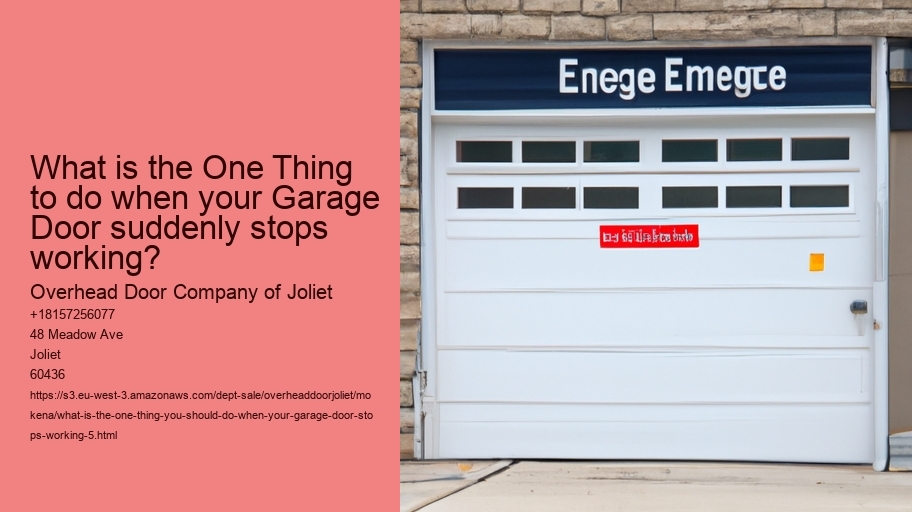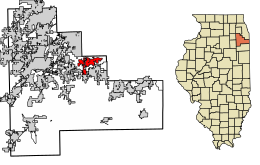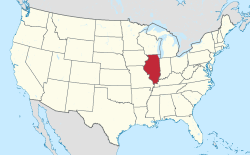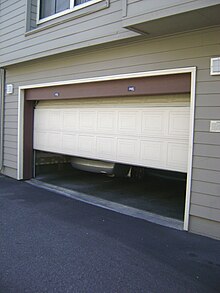What kind of garage door Opener and Door Do You Have? .
If garage doors stop functioning, it could be a frustrating and inconvenient experience.Whether you're hurrying to work, or trying to pull your car in garage during a downpour or storm, a door that isn't working is the last thing you want to have to deal with.The first step to address the issue is to determine the kind of garage door and opener that you are using, as this will significantly affect your approach to diagnosing and fixing.
Garage doors generally fall into different types based on their appearance and operation.The most commonly used kinds are roll-up, sectional, and tilt-up doors.Sectional doors are made up of panel sections connected with hinges that allow the door to bend when it closes and opens on vertical track.Roll-up doors, commonly found in commercial settings are made from slats that roll up into coils.
Tilt-up doors on the other hand, are a single solid piece that tilts upwards and outwards as it opens.Importantly, you must identify the kind of garage door opener.The three primary types are chain-drive, belt-drive, and screw-drive openers.Chain-drive openers, which use a metal chain to lift and lower the door, are sturdy and affordable but they are noisy.Belt-drive openers work similarly, but they utilize a rubber belt which makes them quieter and ideal for attached garages.Screw-drive openers move the door by means of a threaded steel rod that provides a balanced balance between noise and cost.
Once you've identified the garage door's type and the opener's model the next step is to conduct a an initial check for typical issues.Ensure that the power source is connected to the opener checking the outlet and breaker.Inspect the manual release cord to be sure that it isn't pulled, which could disconnect the door from the opener.Examine the door's tracks and rollers to see if they have obstructions or damages and remove any debris.
Lubricate moving parts when needed, as lack of lubrication could cause jamming or sticking.Resetting your opener is a solution to any electronic faults. Read the manual of the opener you're using to determine the precise instructions. Some openers can be reset by pressing one button, while other openers require that the unit not be plugged in and then plugged back in.
In some instances it could be more complex like a damaged spring or a damaged motor which will require expert assistance.Springs are under a lot of tension and are dangerous to repair without the appropriate tools and experience.
If your garage door suddenly stops working or is not working, it's best to consult an expert.
Look for any obstructions or other debris
If your garage door suddenly ceases working, it's extremely frustrating and confusing, especially if it's a part of your daily routine.
One of the first and most useful steps to consider when you are faced by this issue is to check for obstructions or debris.This simple yet effective action is often the most effective way in identifying the issue and returning functionality to the garage door.Garage doors operate through a system of rollers, tracks, and other moving parts that have to be clear of any obstacles to work smoothly.Over time, dirt, leaves, small stones, or other debris can accumulate on the tracks or become stuck in the rollers.Even small obstacles can stop the door from opening or closing properly.Therefore it is imperative to conduct a thorough examination of these components should be your first step.
Begin by visually examining the tracks on both sides of the door.Look for obvious obstructions or accumulation of debris.If you notice anything unusual like an twig or stone stuck to the track be sure to remove it.
There are times when the problem may not be immediately visible, so it's advisable to run your hands through the track and feel for any unseen obstacles.Ensure that the tracks are aligned properly in addition, as any misalignment could cause the door to become jammed.Also, inspect the hinges and rollers. These parts should be able to move without a thump. If they are stuck or sticky, this could be caused by rust or grime. Lubricating and cleaning these parts can generally solve the issue.
Be sure to inspect the area surrounding the door. Sometimes, objects within the garage could be moved or fall, thereby blocking its path. Check that the area is free of obstructions and that there are no obstructions that might block the door.
Examine the sensors to determine why the door is not opening after you have removed any obstructions.
The sensors on modern garage doors could malfunction when they're dirty or not aligned correctly.In conclusion, when confronted with the garage door that abruptly stops working, checking for debris or obstructions is a logical and often successful first step.It takes only a few tools and know-how, but it will save your time, money, as well as the inconvenience of calling a professional for what could be a straightforward fix.By maintaining a clear path and
Inspect the Remote Control and Wall Switch
If your garage door suddenly stops functioning, it can be an unintentional inconvenience that interrupts your regular routine.In such instances there is a natural feeling of that you must solve the problem quickly.One of the initial and most effective steps you should consider is to check the remote control as well as the wall switch.
By checking these components, you avoid costly errors.First, consider the remote control.This handheld device is your primary tool for operating the garage door without direct physical interaction.Over time, remote controls can experience issues such as drained batteries, signal interference, or even internal damage.Start by replacing the batteries with new ones.It might seem simple, but dead batteries are a common reason for a garage door not responding.If the problem persists after replacing the batteries, try reprogramming the remote according to the manufacturer's instructions.Additionally, ensure that the remote is within the recommended range and that there are no obstructions blocking the signal.
Then, shift your focus towards the wall switch. It is an additional essential component in the garage door's design.
The wall switch is directly linked to the garage door opener and often provides a more reliable way of operation.Inspect the switch for any signs of physical damage, or wear.Sometimes, loose wires or faulty connections can cause the switch to malfunction.If you feel confident doing this, make sure you access the switch's control panel and look for damaged or broken wires.If you find any problems, it may be necessary to call an electrician who is licensed to deal with the issue.The remote control or wall switch is working, but the door is not yet responding. This could indicate a problem with the garage opener unit or with other parts, like sensors or door tracks.
It is possible to eliminate these issues prior to moving on to more complex troubleshooting.The final step is to examine the wall switch and remote control when your garage door suddenly stops functioning is a simple and practical approach.By addressing these components first, you'll quickly identify if the issue is in these parts that are easily accessible or if further examination is needed.This initial examination does not only cut down on time, but also gives you confidence that you have taken the appropriate steps to identify the problem correctly.
Manually test the Door Balance
It is frustrating and frustrating when the garage door ceases functioning. Garage doors are a vital part of your home as it provides security, protection against elements, as well as easy access to your car as well as storage.
The first step you must make when confronted by a malfunctioning garage door is to test manually the door balance.This simple yet effective procedure can help diagnose potential issues and prevent further damage to the door or its components.The equilibrium of a garage door is crucial for its proper functioning.A properly balanced door means that the door opener doesn't have to work harder than is necessary, which reduces the chance of wear and wear and tear on the motor, as well as other parts.An uneven door, however could lead to more serious issues over time, for instance, misalignment or broken springs, or a complete system failure.Therefore, testing the door balance is an essential diagnostic step that can help you determine whether the issue is in the door or the opener mechanism.
Start by disengaging the garage door opener.
The majority of garage doors come with a release mechanism which is located on the red cord or the handle. Once the door has been disconnected from the motor, lift it to waist-high and then release it. A properly balanced door will stay in place or move at a slow pace.If you find that the door is not properly balanced It is crucial to take care of the issue promptly.Door balance problems are often related to the tension of the springs. It can be dangerous to adjust yourself due to the pressure they're under.It is advised to seek assistance from a professional for adjusting the springs and ensure the door is properly balanced correctly.Doing this not only fixes the immediate problem but also improves the durability and longevity of your garage door system.
In conclusion, manually testing the door's balance is an important first step when your garage door suddenly stops working.
By addressing issues quickly and understanding the importance in addressing the issue, you can make sure that your garage door will function smoothly and safely in the future.Check the tracks and rollers.
If you're confronted with a garage door that has suddenly stopped to open, your initial instinct is to worry or consider the most complicated technical issues.However it is often the answer is in a straightforward inspection of the tracks and rollers.This crucial check will make a difference in time and expensive repair costs, making it the one factor you must consider when your garage door stops working.
Tracks and rollers are essential elements of the garage door's operation system.The tracks comprise the iron rails that control the door as it opens and closes. The rollers are the small wheels which move along the tracks.
What is the one thing You Should Do When Your Garage Door Stops Working? - COVID-19 pandemic
- Sears
- golf
- signal
Begin by examining the track for any obstructions. Dust, grime and even small debris may accumulate, causing rollers to struggle to travel on the track. Cleaning the tracks with a moist cloth could solve this problem.
What is the one thing You Should Do When Your Garage Door Stops Working? - middle school
- Will County
- COVID-19 pandemic
- middle school
In addition, checking the rollers are important.Over time, they can get damaged or worn out particularly if made from plastic.
Metal rollers with bearings are more durable and allow for an easier operation.Furthermore, lubrication is a essential role in maintaining the smooth movement of the tracks and rollers.Applying an oil based on silicone could decrease friction and reduce wear.Make sure to lubricate every moving part, including springs and hinges to ensure that your garage door is operating efficiently.
By ensuring that these components are properly aligned and lubricated, it is possible to bring back the garage door's complete functionality.
Monitoring and regularly maintaining these components will help prevent any malfunctions from occurring in the future. This will extend the lifespan of the garage system.Look for obvious damage or wear
When garage doors stop working, it's both inconvenient and frustrating, particularly if you are going out or trying to make sure your home is safe for evening.While there could be various reasons behind the issue, one of the most effective and quick steps to take is to look for visible damage or wear.This first inspection will usually determine the root of the issue, allowing an immediate and effective solution.
The garage door is a complex system that is made up of a variety of parts, like springs cables as well as rollers and tracks all of which play an important role in the seamless operation.Over time, these components will wear out due to regular use and exposure to environmental factors.
If you conduct a thorough visual examination, you will be able to identify any obvious signs of damage that could be creating problems for the door.Begin by inspecting the springs, which are crucial to the lifting and lowering of the door.Look for signs of damage, rust, or misalignment.A broken or worn-out spring could make the door inoperable, therefore it is imperative to fix the problem promptly.Next take a look at the cables and inspect whether there are broken or frayed strings that could hinder the door's movement.Similarly, inspect the tracks and rollers for any damage, dents or obstructions that might be hindering the door's path.
Another aspect to be focused on is the door itself.Look for bents, dents, or warping that might affect its balance and alignment.Pay close attention to the weather stripping located at the top of the door as a damaged strip can cause the door to not seal properly.
Additionally, ensure that the sensors of the door are clean and aligned since misalignment, dirt or dirt can hinder their work and make the door stop working.A visual inspection is beneficial however, you must keep in mind that not every issue is instantly apparent. If you do not see any obvious indications of damage or wear, you might need to speak with a professional to determine the problem.
When confronted by a malfunctioning garage door, searching for obvious wear or damage is the initial step.This technique not only aids to identify the issue fast but also allows you to take the necessary action in order to return the door to working properly.
Being proactive and vigilant You can ensure the longevity and security of the garage door.Assess the Springs and Cables
When your garage door stops working it could be frustrating and inconvenient.One of the most vital actions you can take in this instance is to look at the springs and cables.These elements are essential for the proper functioning of your garage door and problems caused by them are usually the cause of a malfunctioning door.
The springs play an important role in the performance and smoothness of your garage by counterbalancing the weight. There are two main types of springs: extension and torsion. Torsion springs are placed above the garage, and they twist to store energy. Extension springs however are installed on between the doors and are stretched to supply the required force.
The springs could be worn out with time, break or lose tension causing problems in operation.Similarly, cables are essential as they work in tandem with the springs to lift and lower the door.They are typically made of steel, and are made to withstand high tension.However cables can suffer from wear and tear, fray, or snap due to the enormous pressure they're under.A broken cable could cause the door to become unstable or even inoperable.
If you're not sure if the cables or springs require to be adjusted, visually inspect them. Check for indications of wear or rust.
It's vital to focus on the safety aspect when working with garage door parts.
Cables and springs are under extreme tension and could cause serious injuries when mishandled.If you're not familiar with garage door repairs, it's wise to seek out an experienced technician.They have the necessary tools and knowledge to properly repair or replace these components to ensure your garage door operates properly and securely.In conclusion, when your garage door suddenly stops working, assessing the springs and cables is a key step in diagnosing the problem.Understanding their role and potential issues can help you determine whether a simple adjustment is needed or if professional intervention is required.Taking prompt action not only restores functionality but also ensures the safety and longevity of your garage door system.
You Should Call a Professional Technician
When your garage door suddenly stops functioning you may be unable to continue your day or even create a security risk to your home.
It is tempting to pick up a toolbox to try a fix at home however it is better to seek out an expert. This will not only guarantee your safety, but provide a long-lasting and more effective solution.Garage doors are complex systems composed of various components such as springs, cables, tracks, and electronic parts.Each of these elements plays a crucial role in the door's operation, and a malfunction in any part can cause the entire system to fail.Without proper knowledge and experience, attempting to fix these issues can be dangerous.For instance, garage door springs are under high tension and can cause severe injury if handled improperly.Professional technicians are trained to deal with these risks safely, using the right tools and techniques to handle repairs.
Additionally, a professional technician is a skilled professional with experience and knowledge that a layperson does not possess.
They can quickly diagnose the issue and identify whether it's a minor problem, like a misaligned track, or something more serious, like a broken spring.This expertise not only saves you time but also prevents the potential for further damage that can occur with incorrect handling.Professionals also have access to high-quality parts and can ensure that replacements match the specifications of your existing garage door system, leading to better functionality and longevity. A professional technician can also be economical in the long-term. Although a DIY option may appear more affordable at first but, it could end up resulting in expensive and costly repairs in the future.
What is the one thing You Should Do When Your Garage Door Stops Working? - COVID-19 pandemic
- leadscrew
- sensor
- judiciary
A professional can save you significant time and hassle.Trying to grasp the complexities of garage door mechanics and purchase the correct tools, and execute an repair can take hours or even days.In contrast, a technician can usually resolve the issue quickly, and allow you to resume your daily routine without any unnecessary delays.
The desire to repair the garage door yourself is strong. But, calling professionals is the best solution, most reliable and safest choice. Their expertise as well as access to top quality replacement parts and their capacity to carry out quick and precise repairs ensure that your garage will run well and safeguarding your home.


















